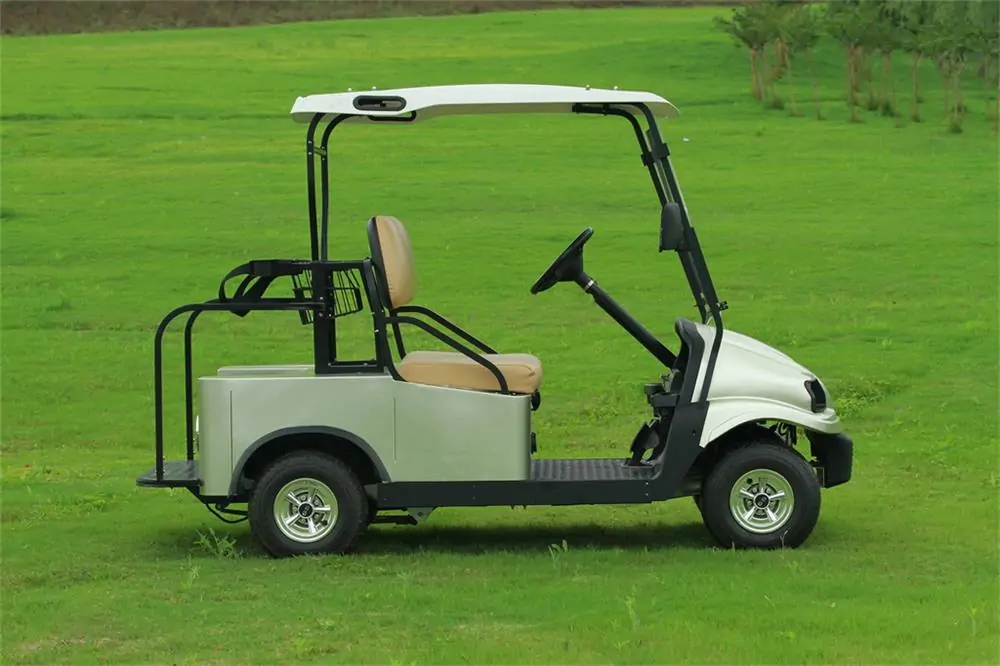
Golf cart batteries are the unsung heroes of every smooth ride on the greens or neighborhood streets. For golf enthusiasts and casual riders alike, understanding battery longevity is key to avoiding mid-game hiccups and costly replacements. This comprehensive guide dives into the factors affecting golf cart battery life, maintenance best practices, and actionable tips to squeeze every mile out of your power source. Let’s explore how to keep your cart running longer and stronger.
Unlike standard car batteries, golf cart batteries are engineered for deep-cycle performance, enduring repeated discharges and recharges. They come in several types, each with unique traits:
Flooded Lead-Acid (FLA): The most common and affordable option, requiring regular maintenance.
AGM (Absorbent Glass Mat): Maintenance-free, spill-proof, and vibration-resistant.
Gel: Similar to AGM but with gel electrolytes, ideal for extreme temperatures.
Lithium-Ion: Lightweight, long-lasting, and fast-charging, though pricier upfront.
Knowing your battery type is the first step in optimizing its lifespan.
Most golf cart batteries last 4–6 years or 500–1,500 operational hours, but this varies widely. Lithium batteries lead the pack with 7–12 years, while lead-acid types typically cap at 3–5 years. Factors like maintenance, usage frequency, and climate play pivotal roles. For example, a lithium battery in a well-maintained cart cruising flat courses will outlast a neglected lead-acid battery tackling hilly terrain daily.
Lead-Acid: Cheaper but shorter-lived (3–5 years).
AGM/Gel: Mid-range lifespan (5–7 years) with minimal upkeep.
Lithium-Ion: Premium choice with 8–12 years of service.
Avoid partial charges. Always recharge fully after use to prevent sulfation in lead-acid batteries. Invest in a smart charger with auto-shutoff to prevent overcharging.
Store carts in a dry, climate-controlled space. Cold slows chemical reactions, while heat accelerates corrosion. Ideal storage temperature: 50–80°F.
Inspect terminals monthly for corrosion; clean with baking soda and water.
Top off lead-acid batteries with distilled water (never tap water!).
Tighten loose connections to prevent energy loss.
Infrequent use leads to sulfation, while overuse strains components. Aim for regular, moderate rides to keep batteries active without overtaxing them.
Hilly courses or carrying extra passengers forces batteries to work harder, reducing range per charge.
Accessories like LED lights or coolers add strain. Upgrade to a higher-capacity battery if adding custom features.
Stick with reputable brands like Trojan, EZGO, or EcoTree for reliable performance. Budget batteries often fail prematurely.
Charge Smart: Recharge after every use, even short trips. Let batteries cool for 30 minutes before plugging in.
Avoid Deep Discharges: Never drain below 50% charge. Use a voltage meter to monitor levels.
Equalize Lead-Acid Batteries: Monthly, apply a controlled overcharge to balance cells and prevent stratification.
Winterize Properly: Before storing, charge to 100%, disconnect terminals, and check monthly.
Rotate Battery Position: Swap positions in the bank annually to ensure even wear.
Slow Acceleration: Lagging when you press the pedal.
Reduced Range: Fewer miles per charge.
Swollen Casing or Leaks: Visible damage or acid pooling.
Persistent Low Voltage: Readings below 48V (for 48V systems) after full charging.
Lead-Acid: 800–1,200 (set of 6).
AGM/Gel: 1,100–1,800.
Lithium-Ion: 2,000–4,000 (higher upfront cost but 3x lifespan).
Q: Can I use car batteries in my golf cart?
A: No—car batteries aren’t designed for deep cycling. Use golf-cart-specific deep-cycle batteries.
Q: How often should I water my lead-acid batteries?
A: Check monthly; refill with distilled water when plates are exposed.
Q: Do lithium batteries require maintenance?
A: Minimal—no watering or equalization needed. Just keep terminals clean.
Q: What’s the ideal charging time?
A: 8–10 hours for lead-acid, 4–6 hours for lithium with a compatible charger.
Maximizing golf cart battery life hinges on proactive care and smart upgrades. Whether you opt for budget-friendly lead-acid or invest in long-term lithium solutions, regular maintenance ensures you’re never stranded mid-course. Pair these tips with quality components, and your cart will reward you with years of reliable service.
Ready to upgrade? Explore top-rated lithium batteries for unmatched durability and performance. Your future self—and your golf cart—will thank you!
Contact Person: Miss. Elsa Liu
| WhatsApp : | +8617763274209 |
|---|---|
| Skype : | +8617763274209 |
| WeChat : | 17763274209 |
| Email : | Elsa@lifepo4-battery.com |